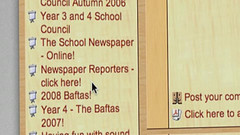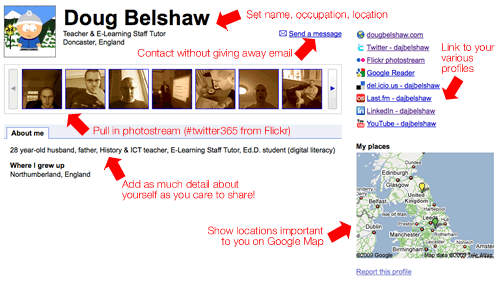What are the ‘functional specifications’ of a VLE that drive real learning?
You may want to read my post What is a VLE? as an introduction to this post!
 It’s the nature of blogs that they reflect the ideas and interests of those who write them. As a consequence, this particular one has, of late, featured much on the ‘nuts and bolts’ of E-Learning – i.e. the systems and processes that enable Virtual Learning Environments (VLEs), for example, to work effectively.
It’s the nature of blogs that they reflect the ideas and interests of those who write them. As a consequence, this particular one has, of late, featured much on the ‘nuts and bolts’ of E-Learning – i.e. the systems and processes that enable Virtual Learning Environments (VLEs), for example, to work effectively.
In my new role as Director of E-Learning (and I quote from my job description) it is my responsibility to:
Ensure the creation of the virtual learning environment (VLE), identifying clear targets, time-scales and success criteria for its development and maintenance in line with the Academy Development plan.
As such, in conjunction with the ICT Advisor from the Academy’s consultants, I need to come up with some ‘functional specifications’ for the VLE. We shall be using the existing VLE that is in place in the current High school, either developing that or replacing it for the new build in 2011.
Becta’s list of functional requirements can be found here, but I wanted to ask those in my network if they had any other suggestions. Here’s what they came up with in a short space of time (click to enlarge):
In terms of what I want to see in a VLE, I think it needs to:
- Be a collaborative space where students and staff can collaborate on documents and web pages (like Google Apps)
- Enable users to have appropriate contact with others within the Academy and the wider community by a range of methods (e.g. Twitter-like microblogging, instant messaging, shared whitetboards, video conferencing,email, social networking)
- Promote learning by have clearly structured course elements, rather than be a file repository.
- Process appropriate data quickly in a visually-appealing and easy-to-understand way for Academy staff, students, and parents.
- Allow students to publish their work to various parties: peers, teachers, the Academy, the world.
- Enable outside agencies to access appropriate data on students, staff and Academy issues.
- OpenID login so users have a single sign-on and have more control over their digital identity.
- Integration with immersive worlds such as Second Life (as, for example Sloodle does)
I’m sure by 2011 there will be many other things I want the VLE to do function-wise, but that’s enough for now… Would appreciate your input in the comments section! 😀
(image by Mr Ush @ Flickr)



 I don’t know about you, but I’m never sure where to link to when I want people to know a bit more about me. For example, when emailing someone who might like to know who I am and where I’m coming from, do I link here, to my
I don’t know about you, but I’m never sure where to link to when I want people to know a bit more about me. For example, when emailing someone who might like to know who I am and where I’m coming from, do I link here, to my 
![Reblog this post [with Zemanta]](http://img.zemanta.com/reblog_e.png?x-id=249c9f66-9afd-4ca6-973c-5dcd1dd4891c)